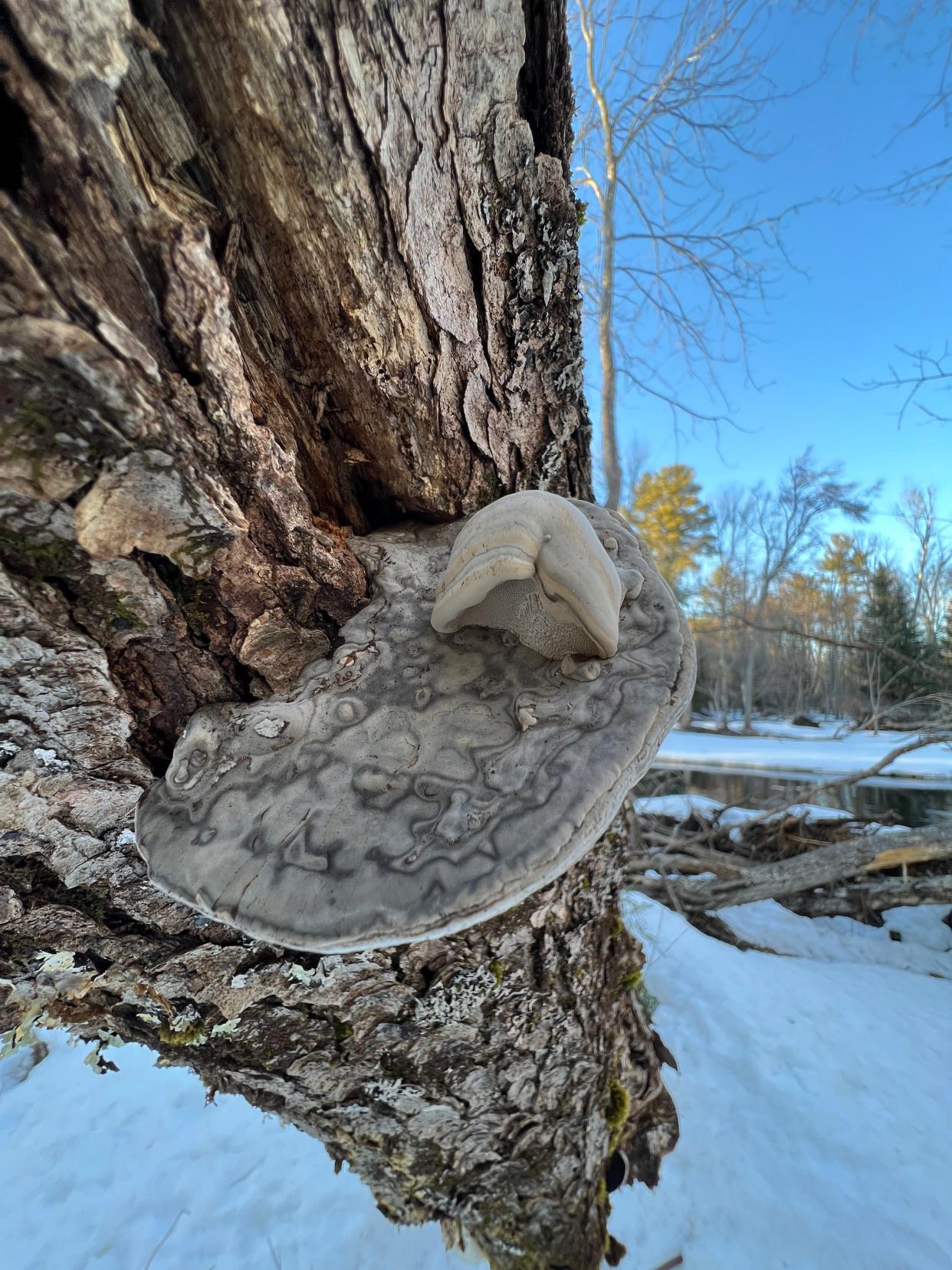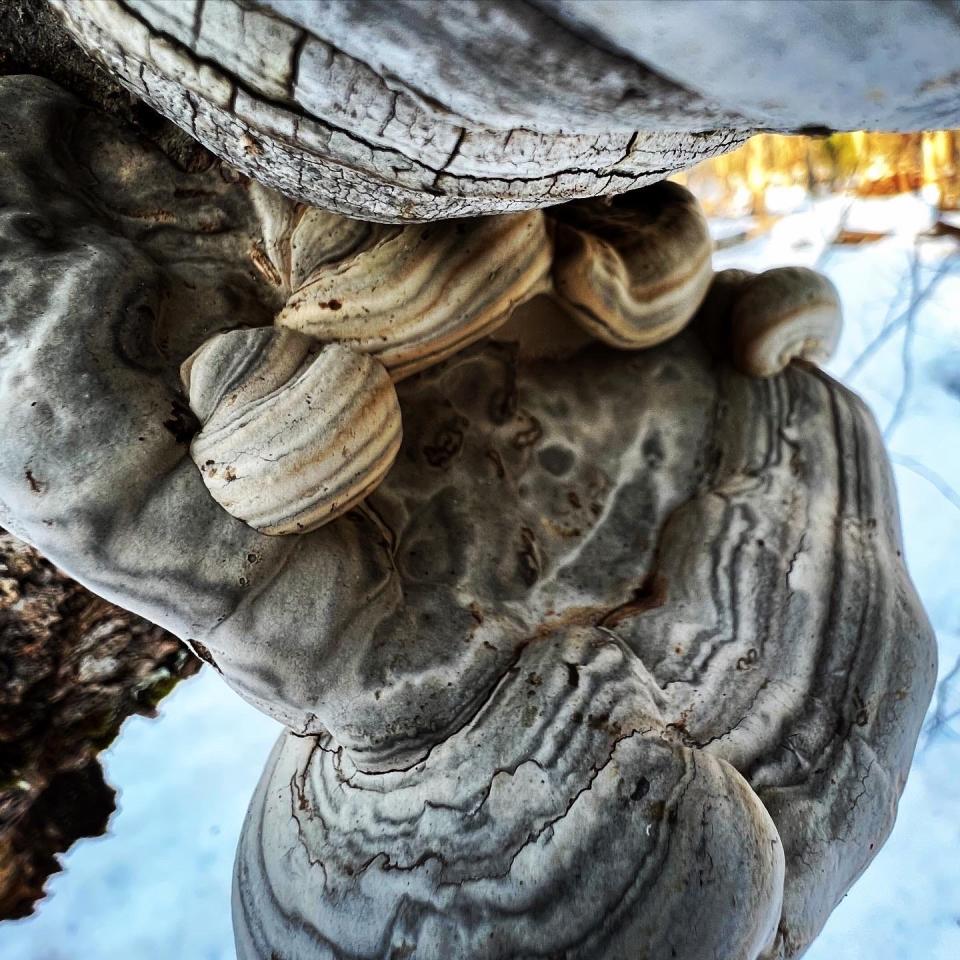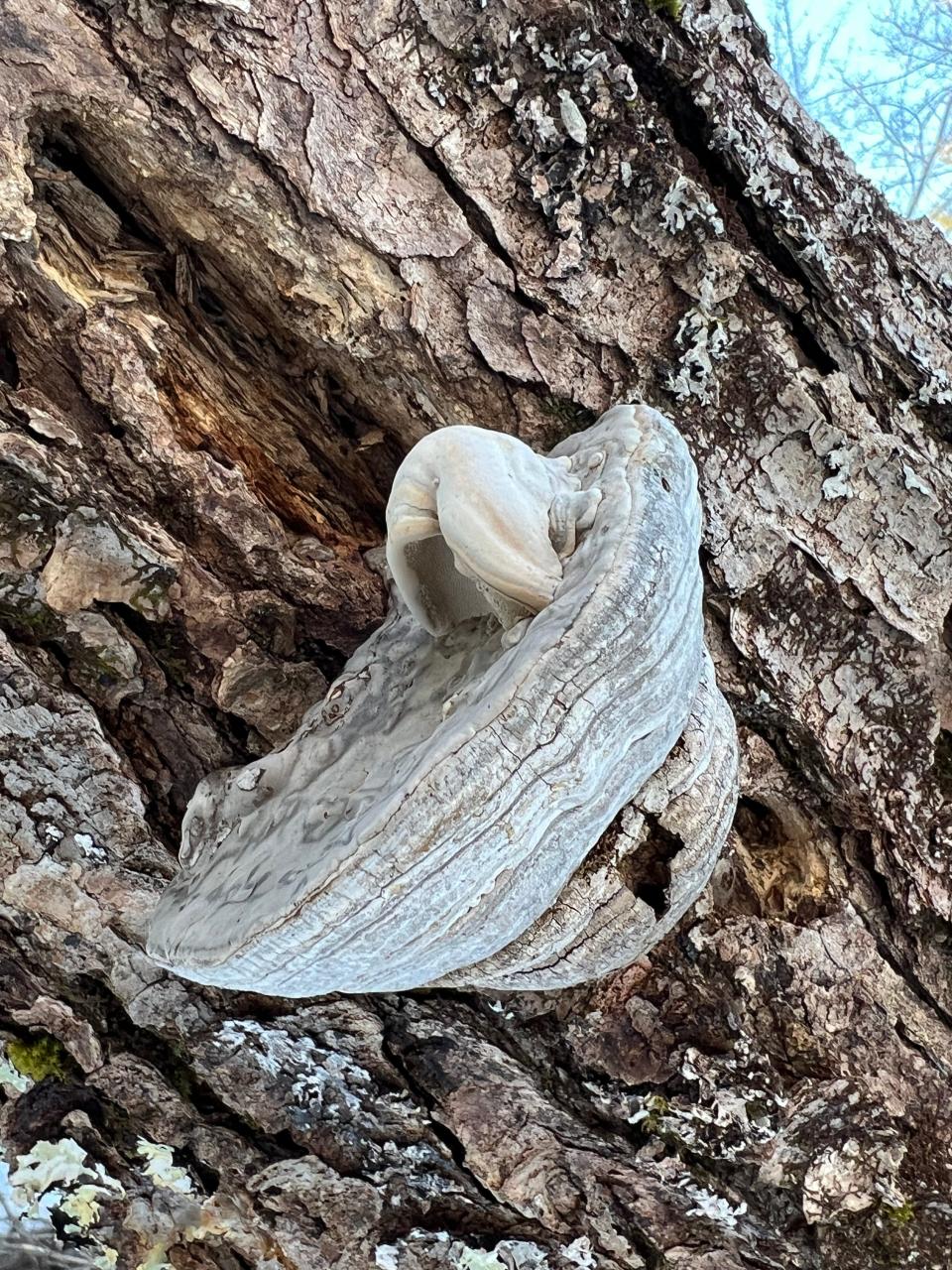Bracket fungi know which way is up. This is why: Nature News

While I was thinking I should write about a spring-like subject, the dawn chorus that now greets us every morning or the skunk cabbage and rhubarb pushing up through the thin remains of the snow, but then I found the coolest fungi that made me forget about signs of spring and instead focus on bracket fungi-woody shelf fungi that had been around all winter, survivors of the cold.
Bracket fungi were growing out of a tree that had been toppled by past snowstorms and high winds. What caught my eye were the convoluted shapes some of the fungi had attained in their attempt to grow in the correct orientation in response to their tree now lying almost upside down.
Just like humans, most plants and fungi can sense gravity. Just think about how seeds ‘know’ to send their roots down and their shoots up while in the soil, away from the light. Charles Darwin was one of the first to recognize and document this phenomenon, gravitropism, in plants. Tropism is the technical term for the growth or turning of an organism in response to an environmental stimulus, like light (think about flowers that track the sun-positive phototropism) or, in this case, gravity. Positive gravitropism means to grow towards the source of gravity (down) while negative gravitropism would be upward growth.

Fungi, who are more closely related to us than they are to plants, can sense gravity and are often gravitropic. Mycologist Britt A. Bunyard, writing in the journal “Fungi” (volume 5:4, 2012) has a wonderful description of his first experience with fungi gravitropism. “I had made a nice collection of Amanita muscaria (these are the stereotypical white-stemmed mushrooms with red caps) and brought the specimens into the lab for all to enjoy. The following day, I returned to the table where I had left my mushrooms and was surprised to find them — no longer pencil-straight. During the night they had continued to “grow.” Or so I thought. The stems had become curved with the mushroom caps no longer resting on the table, instead resuming a position above and horizontal to the surface.” Mushrooms do this to orient their caps in such a way that the spore-bearing parts (the gills or pores) are directed downward for spore dispersal.
More Nature News:How to prepare your nesting boxes for bluebirds
What I find so interesting is how fungi know which way is down, how they sense gravity. In our vestibular system, deep within the inner ear, lie organs that contain tiny stone-like calcium carbonate crystals embedded in a gelatinous matrix. These particles weigh against tiny sensory hairs that line the inside of these organs, telling us which way is down. If you spin or shake your head you often feel dizzy or disoriented because the particles aren’t settled in the downward position anymore. It turns out fungi use a similar system to detect gravity. The nuclei in fungal cells act like the calcium carbonate crystals in human vestibular systems. The fungal nuclei settle against the internal skeleton of the cell, tugging on filaments inside the cell, signaling which way is up. In the case of Bunyard’s lab bench Amanita mushrooms, when he laid the mushrooms on their sides the nuclei settled in a different orientation, pulling on the filaments, triggering cellular changes that resulted in the bending of the stem of the mushroom. I can’t wait to pick some mushrooms and try this!

So, like plants and like humans, fungi know which way is up. Their response to the pull of gravity was tested back in 1996 on the International Space Station. Fungi grown in zero gravity grew in random directions.
However, it turns out this doesn’t quite explain what was happening to my bracket fungi. Instead of turning towards or away from the pull of gravity, bracket fungi form new brackets, one term for this is gravimorphogenesis. According to Bunyard if a bracket fungus is repositioned other than perfectly horizontal, a new bracket will form growing horizontally to the surface, often on top of or out of the original fungus. This is what I was seeing in the bracket fungi in my woods. Tiny new fungi growing out of the original with the correct gravitational orientation after their host tree had fallen.
Next time you are in the woods, play nature detective. If a tree has just fallen, its mushrooms will be oriented in the original position. But give them some time and new bracket mushrooms will grow, or old stemmed mushrooms will turn, ensuring that they are correctly oriented to the pull of gravity.

Susan Pike, a researcher and an environmental sciences and biology teacher at Dover High School, welcomes your ideas for future column topics. Send your photos and observations to spike3116@gmail.com. Read more of her Nature News columns online at Seacoastonline.com and pikes-hikes.com, and follow her on Instagram @pikeshikes.
This article originally appeared on Portsmouth Herald: How bracket fungi defy gravity: Nature News

